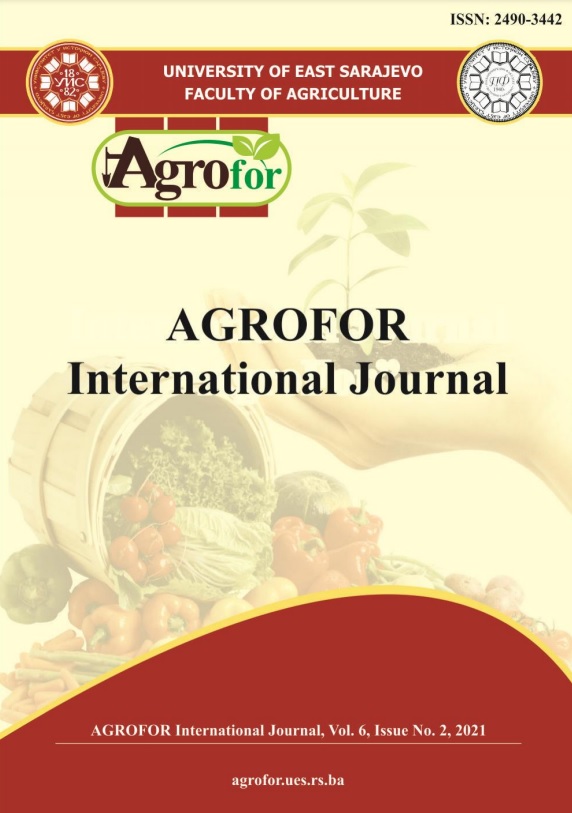IMPACT OF PRUNING LEVEL ON THE PRODUCTIVITY AND QUALITY PARAMETERS OFCARIGNAN WINE GRAPE CULTIVAR UNDER AS-SWEIDA GOVERNORATE CONDITIONS
DOI:
https://doi.org/10.7251/AGRENG2102124MAbstract
This research was carried out in the fields and laboratories of Apple and grapevine Research Department in Sweida Governorate- Syria during the period 2016-2018 on 20 years old Carignan wine grape cultivar grafted on Paulsen 1103 rootstock, in order to study the impact of the pruning level on productivity, and quantitative and qualitative characters of bunches and berries. The vines were pruned with three levels 4, 6 and 8 nodes/cane, with a total of 48 fruitful buds/vine. The results showed that the highest average of fertility rate was at 8 nodes/cane (76%). Productivity varied by the applied Pruning treatments as the pruning treatment 4 buds/cane significantly revealed the highest production (15 Kg/vine). Concerning the average of bunch weight, there were no significant variance among all pruning levels, and the highest bunch average weight was in 8 buds/cane treatment (163g), which also significantly revealed the highest weight of 100 berries (195.6 g), as well as the average ratio of juice (66.2 ml/100g). However, the effect of pruning levels varied in the average of total soluble solids (TSS), total sugar (TS), and
titratable acidity (TA). Consequently, the results indicate the effective role of determining the level of pruning in Carignan wine grape cultivar and its impact on fertility, production characteristics and quality characters of this wine grape cultivar.
Keywords: Grape, pruning, wine cultivar, fertility, productivity.

